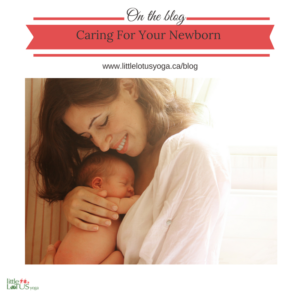The birth of a baby is a magical experience, and signals the end of a long journey through pregnancy and childbirth. It’s finally time to meet this tiny newborn after much anticipation (and a lot of worry!)
In addition to all of the joy and excitement, a number of newborn care procedures occur in the first few hours and days after the baby is born. It’s important that parents are aware of these procedures, so that they know what to expect from their healthcare providers.

Skin to Skin (SKS)
After a normal birth a newborn will be placed immediately on the mother’s chest – this is the best place for baby to stay warm and regulate his breathing. There is also an exchange of bacteria between the mother and the baby, which helps to “seed” the baby’s microbiome (or gut bacteria.) Baby’s skin tone right after birth can range from blue to purple, but as soon as they take their first breath they will begin to turn pink in their core and face (hands and feet remain bluish.)
Some babies are born covered in a white substance called “vernix,” which protects the baby’s skin in the uterus. The vernix does not need to be washed off, and should be left on the skin as protection and moisturizer.
SKS lasts about 1-2 hours after birth, but those who are hoping to breastfeed should consider practicing SKS as much as possible in the days and weeks after a baby is born.
Cord Care
As you admire the newborn in your arms, the placenta and umbilical cord remain intact. Some doctors continue to practice immediate cord clamping, when they clamp and cut the cord as soon as baby has been placed on her mother’s chest. Research shows that delayed cord clamping can be beneficial for baby, as 40% of her blood volume remains in the placenta after birth. This blood continues to pump through the cord to the baby, providing the iron she will need until 6 months of age.
Some hospitals now have delayed cord clamping policies, but the length of time can vary. It’s important to leave the cord as long as it continues to pump blood (anywhere from 1 – 5 minutes after the birth.) If parents feel that delayed cord clamping is something they want to do, it’s important to write it in a birth plan and notify the healthcare provider.
After the cord is cut, a small piece remains along with the plastic clamp. Keep the area dry, and don’t use any kind of alcohol or antiseptic. The cord will dry and fall off on its own within one week.
Newborn procedures
Your baby will be monitored while you practice SKS, and a nurse or midwife will be checking their vitals. Once baby has breastfed and everyone is ready for a break, the nurse will take baby over to the warmer (or on the bed in front of you) to perform a full body check. They will measure baby’s length and head circumference, and check baby’s spine, mouth and hips. Finally, your baby will be placed on the scale for her first weight (grab the camera!)
After the exam, most babies are given erythromycin eye ointment (to prevent infection from chlamydia or gonorrhea) and given a shot of Vitamin K in the leg. Read more about the Canadian Pediatric Society’s recommendations on erythromycin, as hospital practice may soon be changing.
Weight Gain
It is to be expected that babies will lose some weight after birth. Healthcare providers would like to see your baby gain back that weight (and surpass birth weight) by two weeks of age. Your doctor or midwife will be asking you to monitor feedings and pees/poos to ensure that baby is getting the nourishment they need. In the early days, dirty diapers will increase each day – 1 pee and 1 poo on day 1, up to about 5-6 wet diapers and 2-3 poopy diapers every 24 hours on day 6. If you’re seeing the right amount of dirty diapers each day, you know your baby is getting enough milk.
Breastfeeding mothers can expect that newborns will nurse about 10-12 times in a 24 hour period. Babies tend to cluster feed (frequent feeding) around suppertime, so this number can vary for each baby.
Special circumstances and procedures
There are times when babies require further attention after birth, often related to issues during childbirth or feeding challenges. One potential problem is when the mother spikes a fever or develops an infection during labour. Healthcare providers may suspect that the baby has also contracted the bacteria that is causing the fever, and your newborn may need fluids, blood work or antibiotics in the Neonatal Intensive Care Unit (NICU.)
Another common issue is jaundice, a condition when bilirubin builds up in the blood. Bilirubin is a yellow pigment that develops when old red blood cells break down. A newborn baby may become jaundiced because the liver enzyme that metabolizes bilirubin is still immature (or rarely, the liver may not be functioning properly.) Most of the time, nothing is needed to treat jaundice except frequent breastfeeding so that the baby can expel the bilirubin. In more severe cases, phototherapy (bilirubin lights) will be required.
Although parents should not be anxious about the potential procedures their newborn may encounter, it’s important to be aware of the options. Ask your healthcare provider questions, and make sure to discuss the benefits and risks of any procedures that may need to be performed.

Leave a Reply